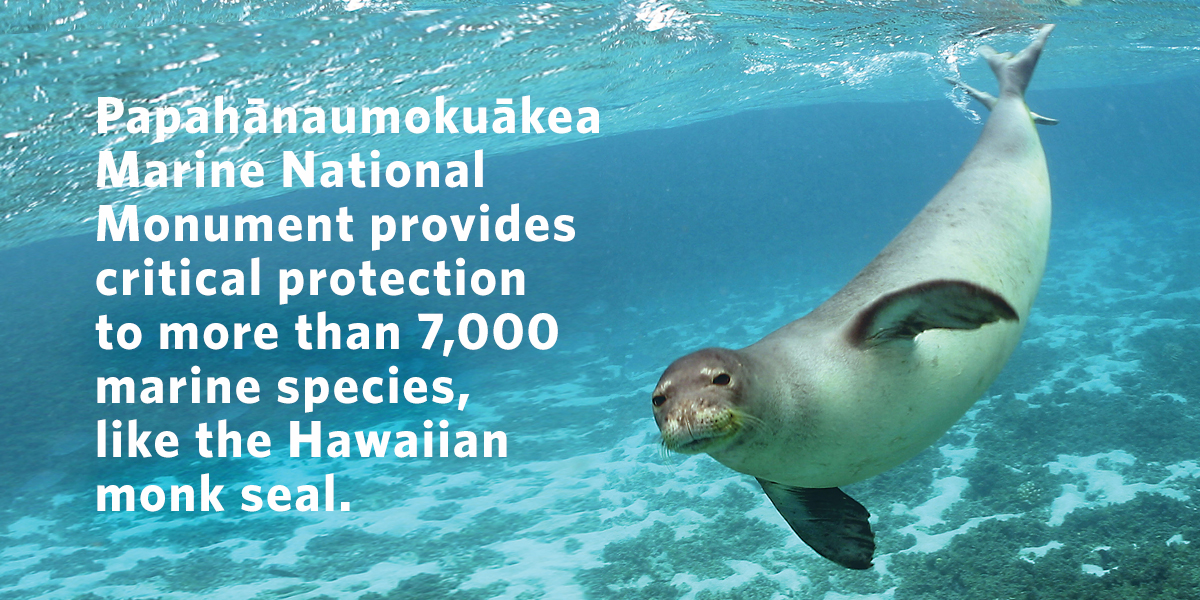

Today, President Obama expanded the Papahānaumokuākea Marine National Monument off the coast of Hawaii to encompass more than half a million square miles — making it the world's largest marine protected area. Home to more than 7,000 marine mammals, some of them critically endangered, the monument will also permanently protect pristine coral reefs, deep sea marine habitats, and important ecological resources.
Here’s what you need to know:
HISTORY
The monument was originally created in 2006 by President George W. Bush and designated as a UNESCO World Heritage Site in 2010. Since that time, new scientific exploration and research has revealed new species and deep sea habitats as well as important ecological connections between the existing monument and the adjacent waters.
IMPACT
The expansion provides critical protections for more than 7,000 marine species, including whales and sea turtles listed under the Endangered Species Act and the longest-living marine species in the world — black coral, which have been found to live longer than 4,500 years. Additionally, as ocean acidification, warming, and other impacts of climate change threaten marine ecosystems, expanding the monument will improve ocean resilience, help the region’s distinct physical and biological resources adapt, and create a natural laboratory that will allow scientists to monitor and explore the impacts of climate change on these fragile ecosystems.
The expanded monument area also contains resources of great historical and cultural significance. The expanded area, including the archipelago and its adjacent waters, is considered a sacred place for the Native Hawaiian community. It plays a significant role in Native Hawaiian creation and settlement stories, and is used to practice important activities like traditional long-distance voyaging and wayfinding. Additionally, within the monument expansion area, there are shipwrecks and downed aircraft from the Battle of Midway in World War II, a battle that marked a major shift in the progress of the war in favor of the Allies.
WHAT’S NEXT
This designation will expand the existing Marine National Monument by 442,781 square miles, bringing the total protected area of the expanded monument to 582,578 square miles. It was made in response to a proposal put forward by Hawaii Senator Schatz and prominent Native Hawaiian leaders, in addition to significant input and local support from Hawaii elected officials, cultural groups, conservation organizations, scientists and fishermen. This step also builds on a rich tradition of marine protection in Hawaiian waters and world-class, well managed fisheries, including a longline fishing fleet that is a global leader in sustainable practices.

